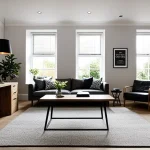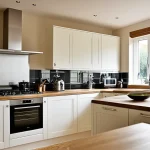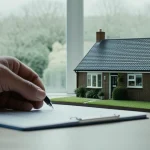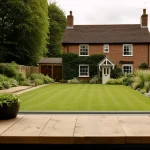Essential steps for creating a pet-friendly home in the UK
Ensuring a pet-friendly home in the UK begins with assessing potential safety hazards unique to typical UK properties. Many older homes have features like open fireplaces, exposed wiring, or narrow staircases that require careful adaptation. Immediate steps include securing loose cables, covering electrical sockets, and installing fireguards to protect curious paws and noses.
Understanding UK pet safety also means acknowledging common household risks such as toxic plants, medications, and cleaning products. Keep these items out of reach or in locked cabinets, especially as pets explore lower levels more frequently than owners might expect.
Also to discover : How can you choose the right pet for your UK home?
Adaptation is crucial since different pets have varied needs. For example, cats may require high perches and safe window access, while dogs benefit from secure garden fencing to prevent escapes common in terraced or semi-detached homes found across the UK. Small mammals and birds, popular pet choices, need safe cages away from drafts and dampness, which can be a concern given the UK’s variable weather.
By integrating these practical advice for pet owners, homes become safer, reducing stress and enhancing wellbeing for all pets—aligning with responsible pet ownership across UK households.
Also read : How can UK pet owners ensure their pets’ mental well-being?
UK-specific safety, material, and regulatory considerations
Navigating UK pet regulations is essential for pet owners aiming to maintain a compliant and safe home environment. UK guidelines often mandate that pets must not be subjected to hazards common in older buildings, such as lead paint or unsafe wiring. Understanding and applying these regulations helps reduce risks and promotes UK pet safety.
Choosing safe materials for pets is another vital step. Many UK homes contain furnishings made from wood treated with harmful chemicals or fabrics that shed toxic fibers. Instead, opt for pet-friendly materials like stainless steel, glass, or untreated wood, which minimize exposure to allergens and toxins. Flooring should also be slip-resistant to prevent injuries.
For renters, adhering to renter pet guidelines UK is crucial to avoid disputes. Landlords may impose restrictions on pet species, sizes, or the type of outdoor access allowed. It’s practical to consult tenancy agreements thoroughly and discuss pet-related adaptations early on. Using removable safety features, such as temporary barriers or non-damaging hooks, can help comply with these guidelines while safeguarding pets.
By carefully considering these special UK regulatory and material factors, pet owners can create a truly safe, welcoming space that respects legal requirements. This proactive approach is both responsible and supportive of overall pet wellbeing.
Best pet-proofing strategies for different UK home layouts
Creating a pet-proofing UK homes plan requires tailored approaches for diverse housing types across the UK. For apartments, space constraints necessitate compact solutions like secure window guards and stable furniture to prevent falls or injuries. In terraced houses, typical features like narrow staircases and shared gardens call for childproof gates and sturdy fencing to contain pets safely. Detached homes often have larger gardens, where perimeter fences must be robust and regularly checked to prevent escapes.
Room-specific pet safety strategies target common hazards efficiently. In kitchens, secure cupboards and appliance locks deter curious pets from accessing harmful substances. Living spaces benefit from cord covers and pet-friendly furniture arrangements that reduce tripping or chewing risks. Bedrooms should offer cosy, accessible retreat zones free of dangling cords or choking hazards. Gardens require clear pathway demarcation, chemical-free plantings, and shaded spots for pet comfort.
Using barriers, covers, and locks is essential across all home layouts. Removable safety gates help contain pets when needed without permanent home alterations, ideal for UK rental settings. Socket covers and corner protectors add extra layers of UK pet safety, especially for excitable or young animals. Employing these practical advice for pet owners ensures every UK home type becomes a secure haven tailored to pet needs and behaviours.
Enrichment and comfort ideas for pets in the UK climate
Creating a stimulating and comfortable environment enhances pet well-being amidst the UK’s often damp and variable weather. For indoor spaces, consider rotating toys and introducing interactive puzzles that engage pets mentally. This keeps animals entertained and reduces boredom, a common issue in homes where outdoor time is limited by rain or cold.
Providing safe, cosy rest areas is vital. Use soft bedding placed away from drafts, as heat retention matters in the UK’s cooler seasons. Positioning beds near natural light helps regulate pets’ circadian rhythms and boosts their mood.
Outdoor pet enrichment should align with the unpredictable UK climate. Shelter options like insulated kennels or covered patios protect pets from wind and rain. For gardens, include shaded zones and avoid plants toxic to animals. Regularly adapting outdoor spaces to seasonal changes safeguards comfort and safety.
A practical approach involves combining mental stimulation with physical comfort. Incorporating climbing posts for cats or digging zones for dogs enriches natural behaviours safely indoors or outdoors. By prioritising pet enrichment UK alongside comfort for pets, owners foster happier, healthier companions well-suited to UK living conditions.
Essential steps for creating a pet-friendly home in the UK
Creating a pet-friendly home in the UK starts with immediate, practical steps to safeguard animals from common household dangers. Owners should secure loose wires and cover sockets to prevent shocks, an essential part of UK pet safety given many older homes’ electrical setups. Removing small objects and poisonous plants reduces choking and poisoning risks, aligning with practical advice for pet owners focusing on typical UK property hazards.
Addressing unique UK safety concerns, like open fireplaces or old fireplaces, requires installing barriers or fireguards. Narrow staircases demand sturdy gates, especially for energetic pets. Adaptations must suit various species; for instance, cats need elevated resting spots, while dogs benefit from secure outdoor access due to the common garden layouts in UK homes.
Tailoring your home environment ensures safety and comfort, reflecting the diverse needs of pets under one roof. Prioritising these practical advice for pet owners creates a secure retreat, promoting wellbeing and confidence in your pet’s daily life in the UK.








